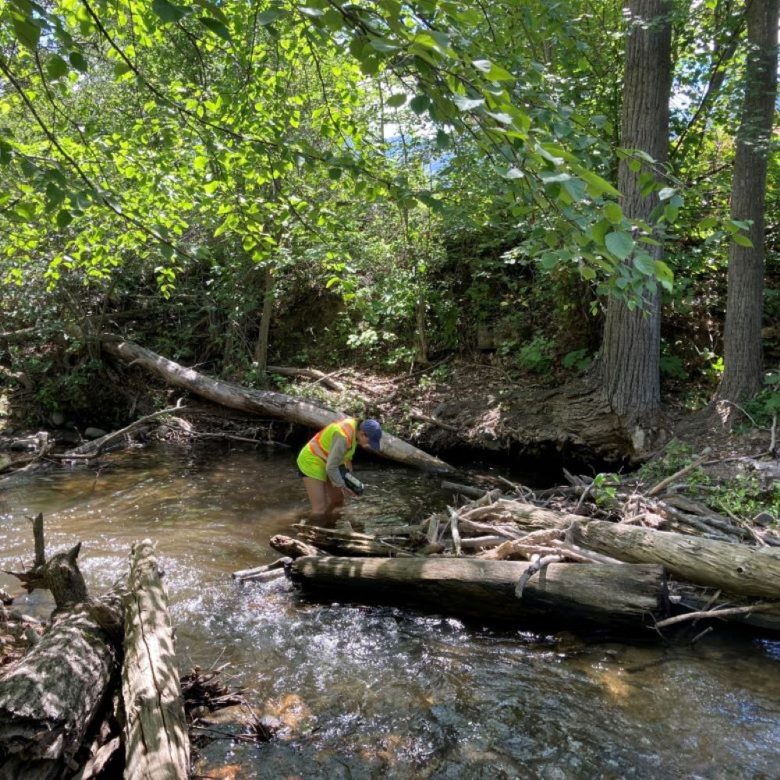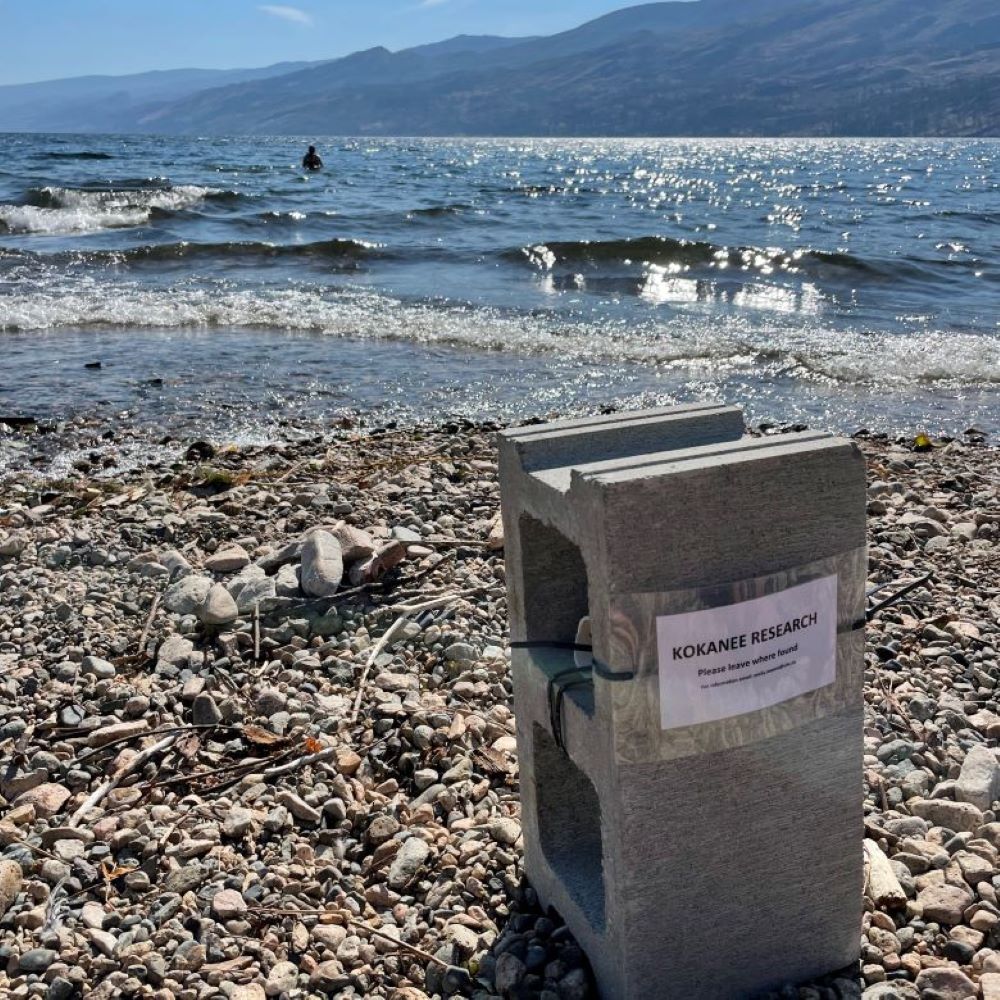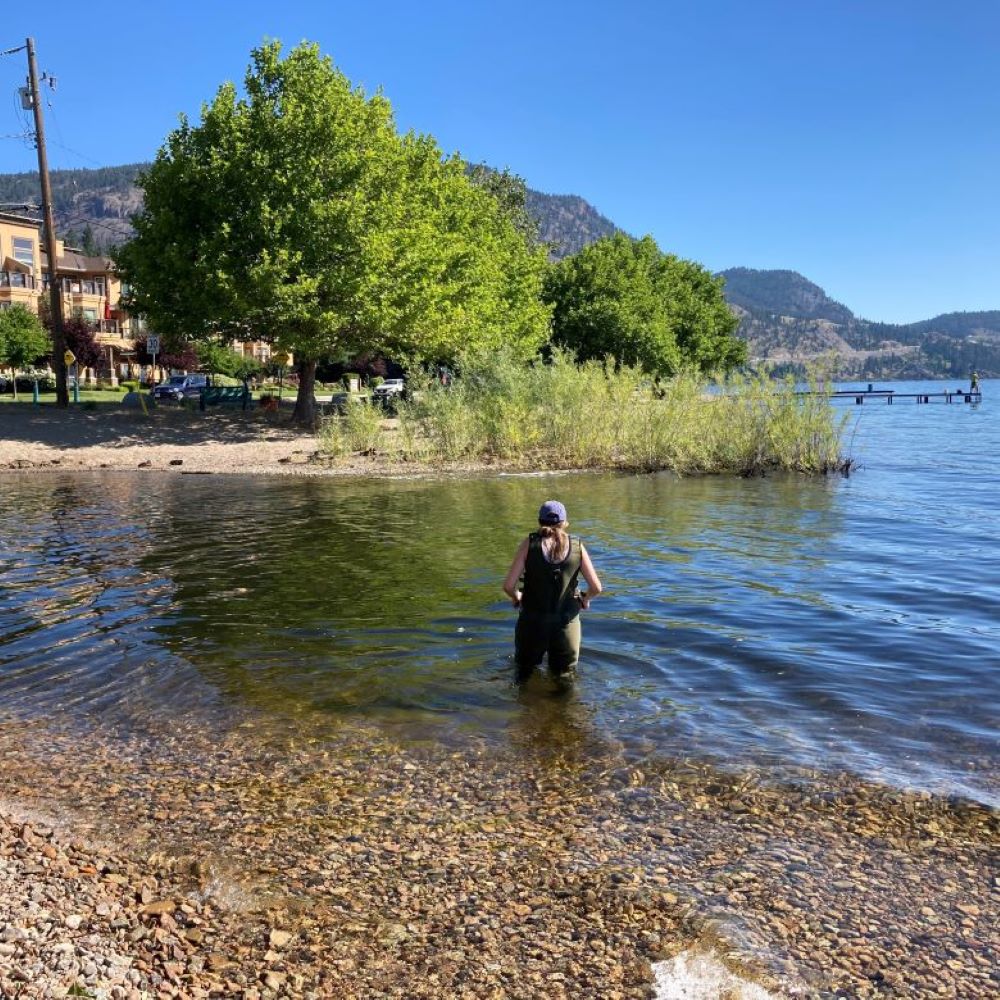Emily Moore

Emily Moore is an MSc student in the Department of Earth, Environmental, and Geographic Sciences.
Emily moved to the Okanagan after completing her BSc. in Environmental Science at the University of Calgary, where she is originally from. Emily’s research interests are centered around the interactions of hydrology and fish ecology, forming the basis of her role in the research cluster here at UBCO. Alongside Sheena Spencer and Adam Wei, Emily will be investigating the sources of yearly variation in spawning timing of kəkniʔ (kokanee) salmon in sqʷʔa (Peachland Creek) watershed. By determining which hydrologic and climatic variables are the most important to the success of the kəkniʔ spawning run, watershed managers will be able to efficiently allocate water to fish flow needs exactly when and where they’re needed.
About
Emily Moore
MSc Student, Department of Earth, Environmental, and Geographic Sciences
Email: emily.moore@ubc.ca
Research
Fish
Understanding environmental drivers and impacts of cumulative effects and other stressors on kəkniʔ (kokanee) spawning timing and duration with Dr. Sheena Spencer and Dr. Adam Wei
Fish need a lot of oxygen to fight their way upstream to spawning areas. Fish absorb dissolved oxygen through their gills, but warm siwɬkʷ (water) contains less oxygen than cold siwɬkʷ , so as temperatures rise, fish struggle to breathe.
Stream siwɬkʷ (water) stays cold and plentiful though the spawning season if it originates from melting snow, is shaded by a forest canopy, and is allowed to move in and out of the ground slowly as it flows downhill.
In the Okanagan, climate change is resulting in more rain and less snow, and remaining snow melts sooner and faster. Forest harvesting reduces shade. Forest fires and forestry roads reduce the ability of siwɬkʷ (water) to soak into the soil, increasing the speed that siwɬkʷ runs off into creeks.
The result of these cumulative effects is an early, dramatic spring flood followed by low, warm summer flows. Fish may struggle to survive and spawn under these conditions.
By measuring siwɬkʷ (water) temperatures at various points in the creek and in the lake, we can assess how things like watershed disturbance and a changing climate may influence these siwɬkʷ temperatures, and thus, the success of the kəkniʔ (kokanee) spawning run.
“Salmon are an extremely culturally important aspect… Although this is a very specific ecosystem, we can hopefully apply the learnings from this project to other streams and help save the salmon.”
– Emily Moore, fish
We measure the length of representative spawning male and female kəkniʔ (kokanee) during the fish count each fall.
Investigating a dead female kəkniʔ (kokanee) post-spawn. The journey upstream, digging redds in the cobble, and fighting off other spawners takes it toll. Salmon dedicate all of their energy and resources to the act of spawning, and die shortly afterwards.
Gill clips are taken from spawners after they die to obtain valuable genetic information which is shared with other researchers.
Investigating another dead female, post spawn. Fish are only handled once they die naturally following spawning.
A successful spawning run for females means they will have expelled all their eggs. By investigating the number of eggs left in dead females, we gain insight into the condition of female spawners in that year.







